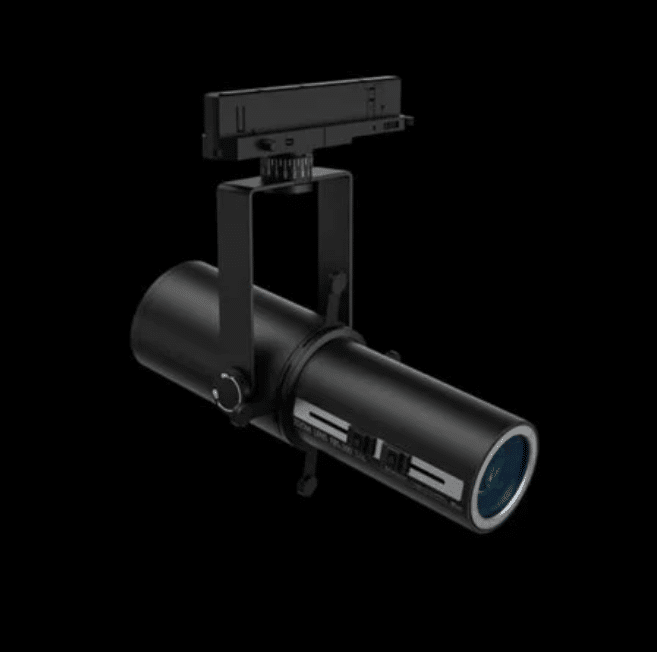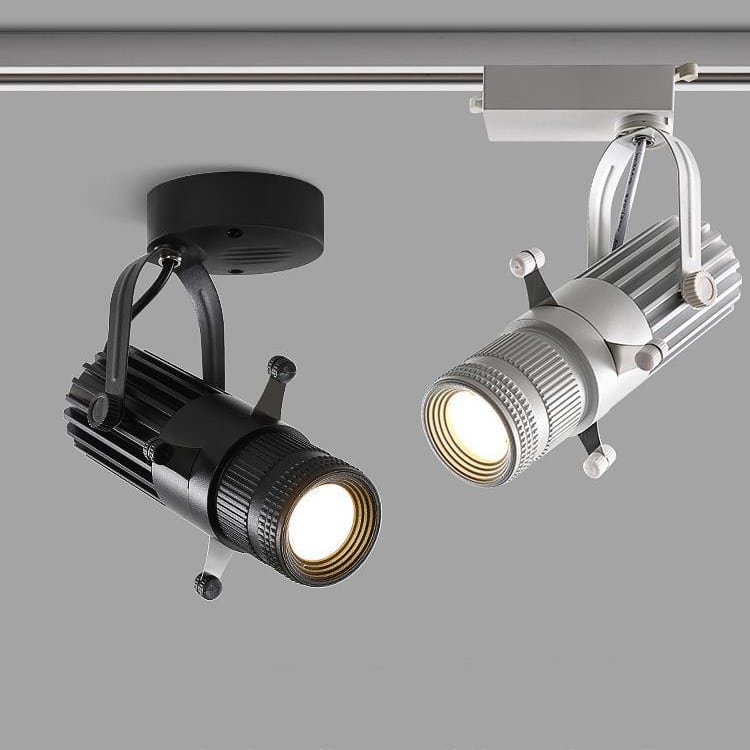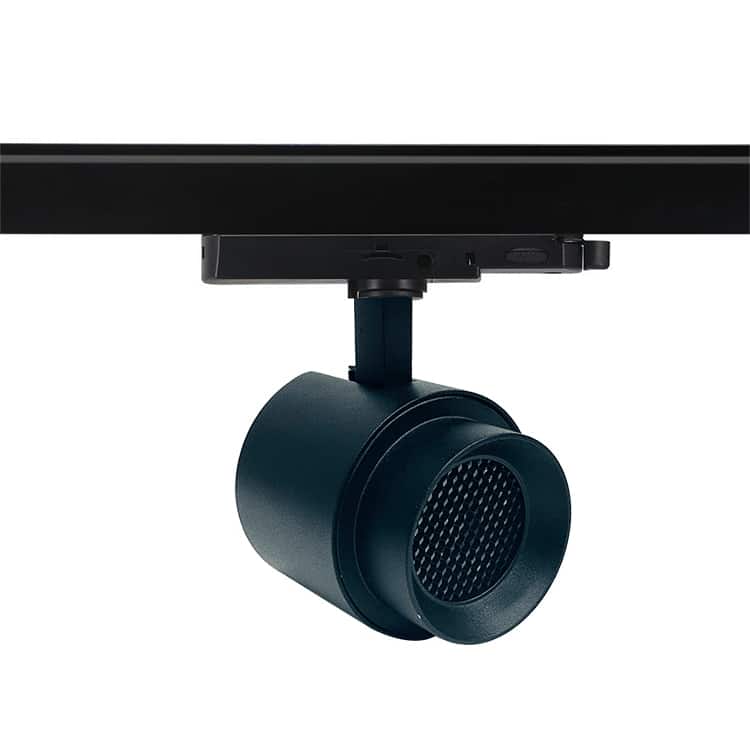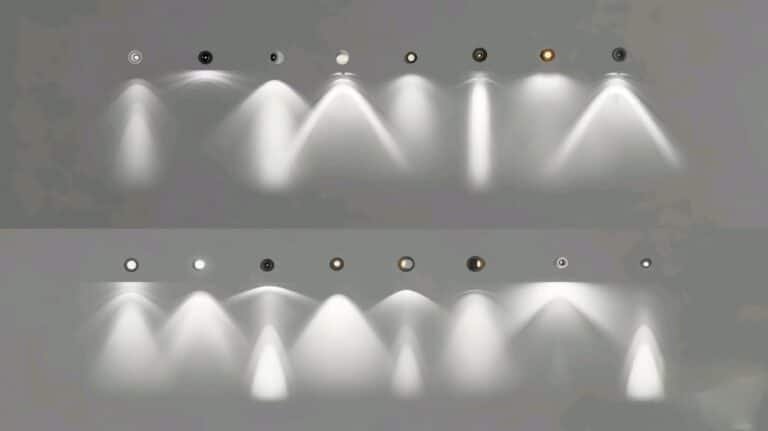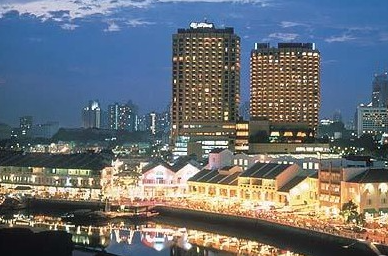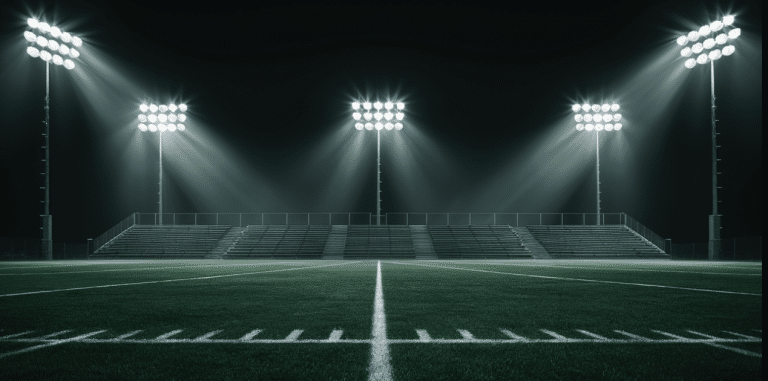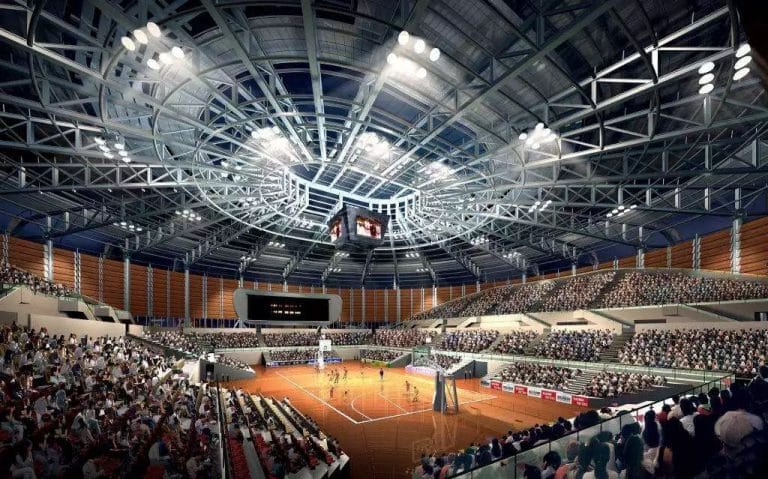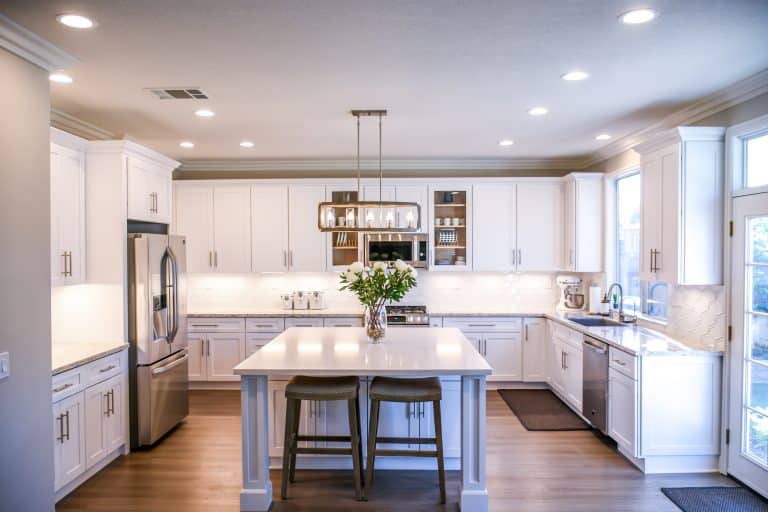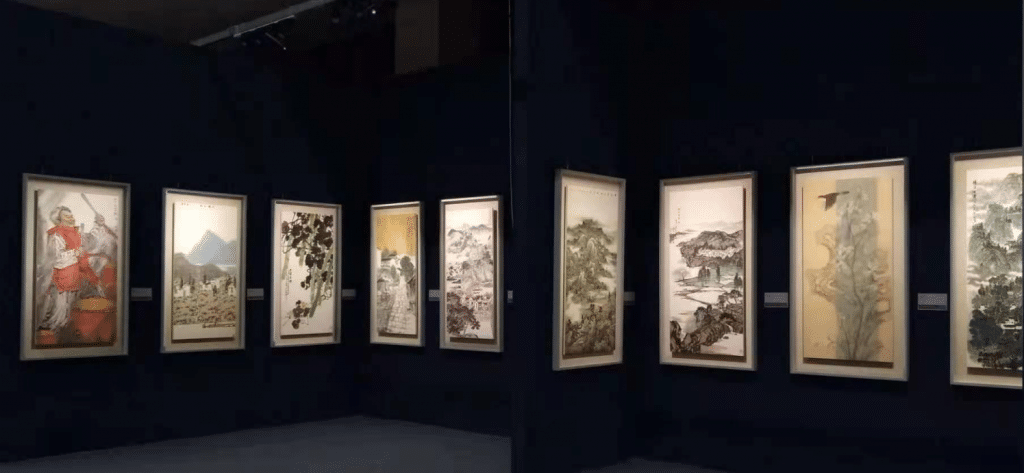
What is Zoomable Lights?
Zoomable light is a type of lighting product that creates special-shaped light spots through a special optical structure. Currently, it’s mainly used in museums, art galleries, memorials, and exhibition halls. It can create a visual impact, making paintings and calligraphy appear to glow spontaneously, attracting everyone’s attention, and better showcasing the beauty of the exhibits. Of course, with the expansion of applications, shapeable LED lights can be used in many other scenarios, such as private residences, high-end hotels, private clubs, and some upscale stores, where shapeable lights are used for product lighting.
The Principle of Zoomable LED Lights
We can see that zoomable lights on the market usually come with four blades, as shown in the diagram below. The blades are used to ‘cut off’ unwanted light. Combining a set of super-convex lenses to converge the light, and then adjusting the edges of the light with the blades, it is possible to create different shapes of light spots such as triangles, rectangles, and squares.
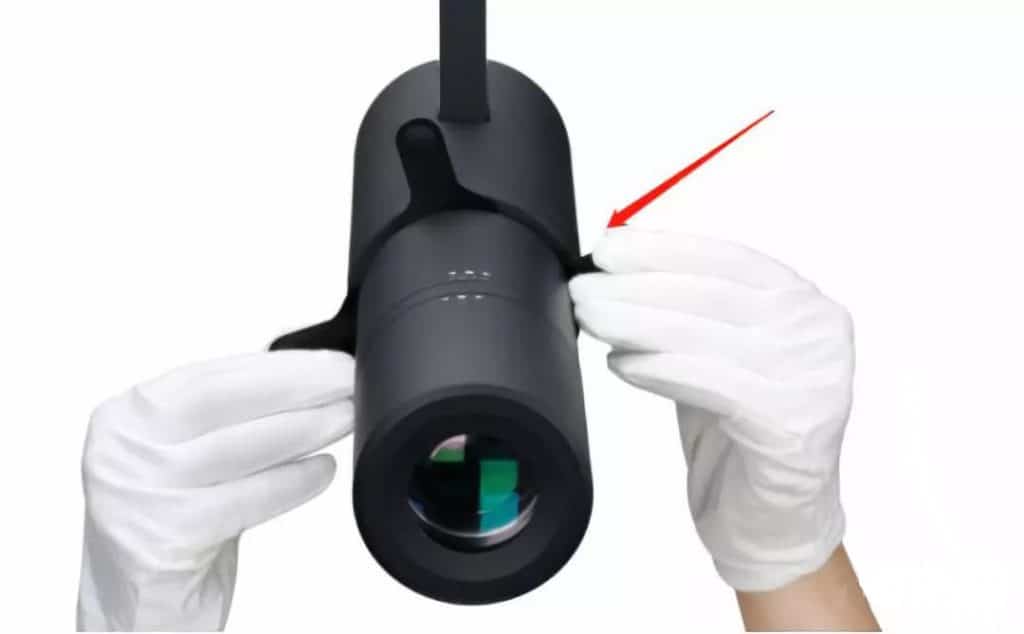
Advantages of GRNLED Museum Track Lighting
| Product Name | zoomable track lights | Power | 7W 10W 15W 30W |
| Voltage | 100-265V | Housing color | black/white |
| CCT | 3000K 4000K 5000K 6000K | Lumen Flux | 90-100lm/w |
| RA | >90 | Smart Driver | Yes for option |
| Degree | 20-35°/50°-60°/25°-40° | Installation | Surface Mounted/ Track |
01. Freely adjust the size, direction, and shape of the light spot for precise lighting cut
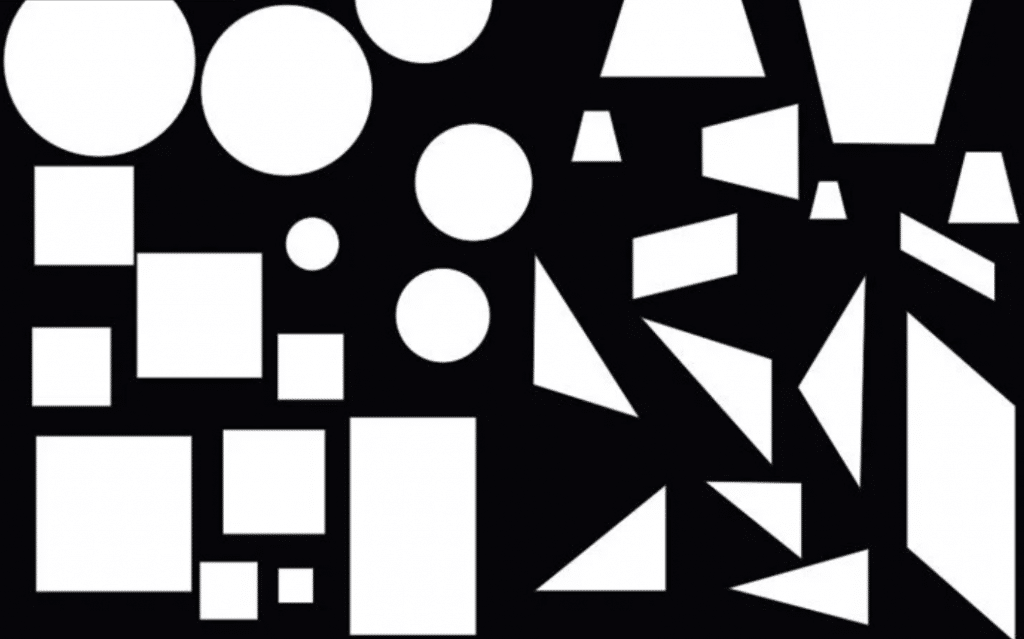
02. The distortion rate is around 2%, and the projected light has sharp edges and clear, shadow-free edges
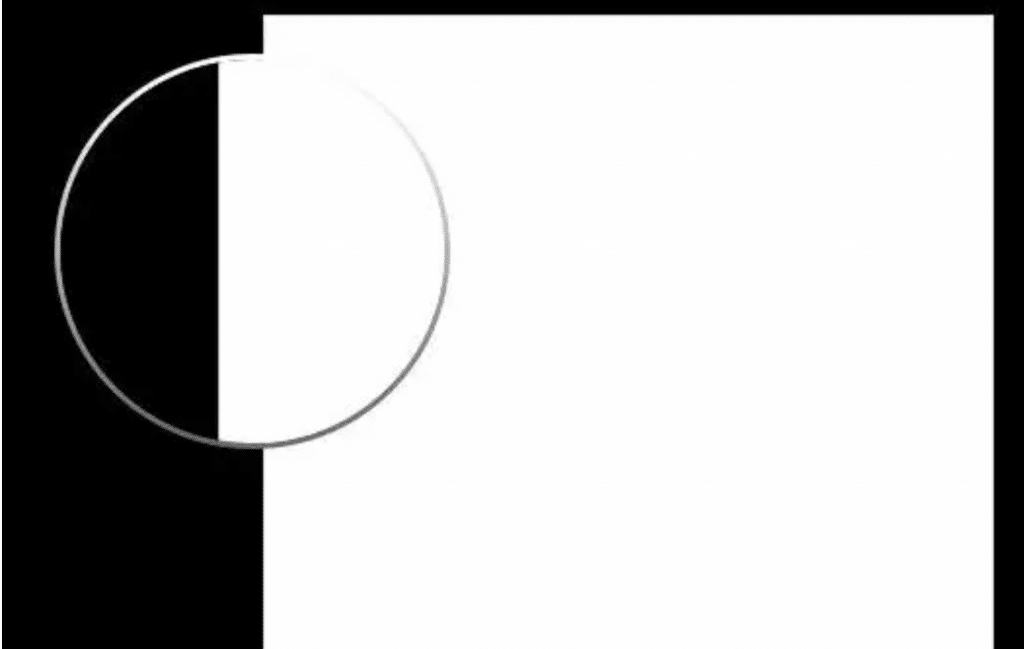
03. The luminous angle can reach 60°, with a wider focusing range
04. Optical lens, no focus shifting, achieving precise focusing
05. The light color is pure, with a uniformity of over 90% in the light spot

06. High color rendering index, accurately restores the colors of artworks, showcasing richer artistic details
07. Smart control, step-less dimming, and color adjustment
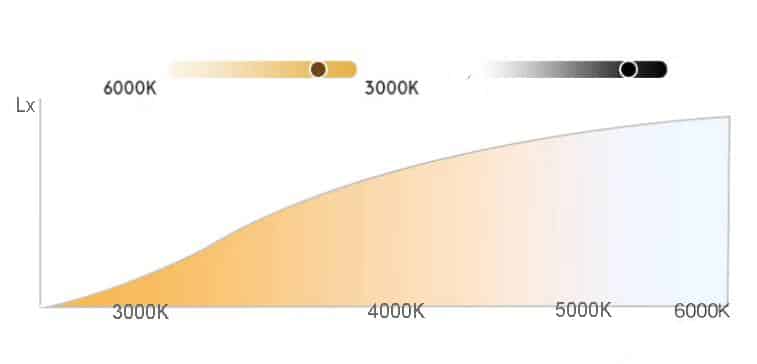
08. Surface and Track Mounted, recessed mounting for option
Factors need to be paid attention to in museum lighting design
- LED museum lighting products must meet national quality and safety certification standards. Safety considerations include mechanical stability for easy installation and removal, and electrical compliance to prevent hazards such as electric shock, fire, and overheating
- To prevent the thermal effects of infrared radiation and the chemical effects of ultraviolet radiation, museum lighting should adhere to standards that limit both. Infrared radiation can cause surface temperatures to rise, accelerating aging and potentially damaging artifacts. Ultraviolet radiation can induce chemical reactions, leading to fading, discoloration, and irreversible damage. Recommended maximum UV levels are 75μW/lm according to IESNA96 and 10μW/lm according to CIE2003.
- To ensure the safety of artifacts, museum lighting design should maintain illuminance levels suitable for viewing while controlling the maximum illuminance to prevent damage. The International Council of Museums recommends maximum illuminance levels of 50Lx to 100Lx for highly and moderately light-sensitive artifacts and 200Lx to 400Lx for less sensitive ones. Lighting fixtures in museums must feature convenient dimming capabilities to adjust illuminance levels as needed for different exhibits, while intelligent lighting systems enable more user-friendly and scientific management of light.
- Implementing a ‘light budget’ system for light-sensitive artifacts involves managing both illuminance levels and exposure time to prevent damage, balancing conservation and display goals effectively.
- Smart lighting systems in museums offer flexible control for tailored illumination, enhancing exhibit management with features like grouped switching, brightness adjustment, and remote operation.
Poor lighting quality, incorrect color temperatures, and improper arrangements can distort artifact appearance and compromise the viewing experience. To address these issues:
- Ensure lighting sources have a high color rendering index (CRI) of at least 90. Evaluate lighting quality comprehensively using the IES-TM30 method, which includes fidelity index (Rf) and gamut index (Rg) for accurate color representation.
- Select color temperatures thoughtfully, considering curator and designer preferences alongside artifact materials and exhibition themes. For example, paintings with specific color compositions may benefit from warmer or cooler temperatures to enhance their visual impact.
- Use flexible lighting fixtures capable of precise multi-angle lighting distribution to accommodate diverse artifact layouts. This ensures optimal display effects by highlighting artifact details and bringing them to life for viewers.
- The placement of lighting fixtures
- Avoide glare. There are two types of glare: direct glare and secondary reflection glare. To eliminate direct glare, it’s essential to carefully plan the layout of the exhibition space, the display format, and the visitor’s path. Selecting appropriate beam angles and arranging lighting fixtures properly helps. Measures to control the amount and direction of sunlight entry should also be taken into account. Additionally, using fixtures equipped with anti-glare shields or nets can be helpful. To avoid secondary glare, it’s crucial to reduce the illuminance ratio and minimize large bright areas. Moreover, attention should be paid to ensuring that the projection angle of the fixtures does not exceed 45 degrees.
- In museum lighting design standards, uniformity of illumination for exhibited items is crucial. For flat exhibits, the minimum to average illuminance ratio should not be less than 0.8, while for exhibits taller than 1.4 meters, it should not be less than 0.4. Controlling spill light and achieving excellent falloff effects help focus viewers’ attention on the exhibits and reduce visual light pollution in the exhibition environment.
Conclusion
To bring artifacts to life, good lighting speaks volumes! Quality lighting paired with thoughtful design acts as a storyteller for each artifact, narrating its historical significance captivatingly. High-quality museum lighting serves as a comprehensive artistic expression of the colors, forms, materials, and stories of exhibited items. Consequently, shapeable LED lights are increasingly used in museums, art galleries, and similar spaces. However, if you have a limited budget, immersive lighting effects can still be achieved by using high-quality LED track lights.
Frequently Asked Questions
- Are all zoomable lights large?
- Most zoomable lights used for general lighting purposes tend to have larger dimensions. However, some brands have developed mini shapeable lights for use in cabinets or showcasing boutique items, such as Fuyaa and iGuzzini.
- What other functions do cut lights have?
- Generally, zoomable lights are developed for museums and art galleries, so in addition to the cut effect, they typically feature dimming capabilities. Some also offer color temperature adjustment, while others include RGB effects, making them versatile and powerful in functionality.
- What is the price range of zoomable lights?
- Due to their specialty, zoomable lights are considered high-cost, high-value, high-price products. On the market, zoomable lights range from a few hundred to several thousand US dollars.
- What is the best museum lighting color temperature?
- Neutral White Light (3000K – 3500K) is commonly used for general display purposes. Cool White Light (4000K – 5000K) used for contemporary or modern art. Warm White Light (2700K – 3000K) is often used for historical artifacts and older artworks.
As for the origin of zoomable lights and their first use, it’s difficult to trace. It’s unclear which brand first developed them or where they were initially used. One might speculate that their design was inspired by projectors or perhaps cameras.

Hello, customers
My name is Ricky Wang, I’m the business manager of GRNLED. I have been in LED lights industry for more than 10 year. Feel free to contact us. I’m happy to provide you the best service and products.
Email: info@grnled.com | WeChat: ledfixture

